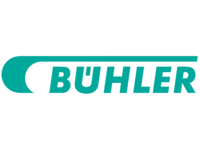Sparked interest?
Bühler AG
The Single Source of Truth at Bühler
Bühler goes back a long way - to 1860 to be precise, the year the company was founded in Uzwil in Switzerland. Today, Bühler is a dynamic and innovative company that can be found on three continents and in more than 140 countries. Bühler is market leader in many sectors and sets standards with its process solutions in food technology, as it does with its pressure diecasting components for automotive manufacturing. A dynamic enterprise with sustainability close to its heart. A company that has learned to master complexity and use digitalization to make its manufacturing and production processes more transparent.

Global technical writing, distributed data - a major challenge
Complexity and transparency are also the two keywords that drive technical writing at Bühler. This is because the company's technical editorial teams are also spread across locations in America, Europe and Asia. However, the relevant data that the technical editorial teams had to deal with was spread even further afield. This is because this important information was scattered across the most diverse systems in the most diverse departments of the company. This did not necessarily make it any easier for Bühler and its editorial teams to achieve their major goal: To provide all information quickly and accurately to all customers.
The problem faced by Bühler's editors therefore had several aspects. Firstly, it was often not clear where relevant information could be found. If the information was available several times, there were sometimes contradictions between the individual sources. Here, too, it was not always clear which level of information was binding. Once the information had been found and assessed for accuracy, most of it had to be entered into the editorial system by hand. A time-consuming process that took a long time and was also prone to errors. And last but not least: The correct data, which had been determined with great effort, was not returned to the original data sources. Errors or outdated information thus remained in the data storage and had to be clarified again the next time it was updated.
SCHEMA ST4 as the key to efficiency and quality
So the challenges were clear. But how could such a Gordian knot of unlinked data sources, manual information transfers and the lack of a solution for continuously improving data quality be cut? For Bühler, it quickly became clear that the solution lay in the introduction of SCHEMA ST4 as an editorial system. The tried-and-tested component content management system has everything it takes to speed up the work of technical editors, automate process steps and eliminate unnecessary manual work. However, this is of course only half the battle if the editorial system is just another isolated solution introduced in the company. However, the fact that the CCMS SCHEMA ST4 offers a large number of interfaces and connection options proved to be an advantage here. This meant that technical editing could be automatically connected to SAP, automation databases, translation memory and Windchill. The editing system also offers many integrated functions and connection interfaces for terminology management, translation processing and controlled language. SCHEMA ST4's workflow and automation modules simplify many processes, and the editorial solution's approval and versioning mechanisms mean that it is always possible to see whether information is current, in the process of being clarified or out of date.
By introducing the SCHEMA ST4 content management system, Bühler's technical editing department has succeeded in becoming the single source of truth, i.e. the data source in the company that guarantees that the information is checked and valid. This does not mean any particular additional work for the editorial team itself, as this check also had to be carried out previously when creating the documentation. The only difference now is that the results of the clarification process find their way back into the company: Be it via automatic connections to the PIM and other data management systems or through the automated creation of content for a large number of departments at Bühler, such as Purchasing, Engineering, Sales or for internal training.
In addition to the increased reliability of the editorial process and the avoidance of additional manual work, there is also a nice side effect for the technical editorial department at Bühler: the work and value of the editorial department becomes much more visible within the company, the department's contribution as a value driver for Bühler is greatly increased and visible to the management. A good basis for the next innovation, for example when the editorial department at Bühler needs to support the onboarding process or drive digitalization in the company with the digital information twin.
